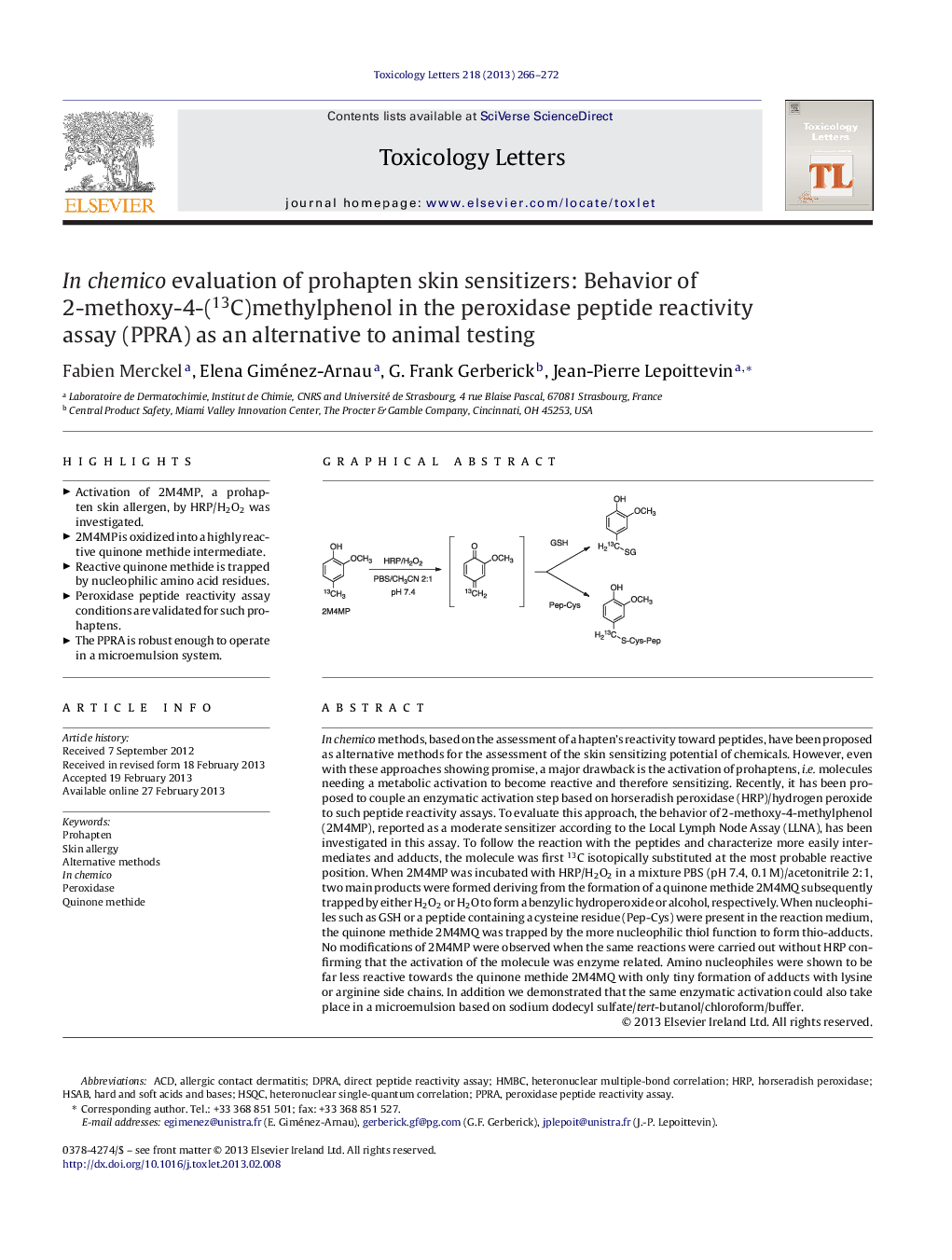| کد مقاله | کد نشریه | سال انتشار | مقاله انگلیسی | نسخه تمام متن |
|---|---|---|---|---|
| 5860639 | 1133211 | 2013 | 7 صفحه PDF | دانلود رایگان |

In chemico methods, based on the assessment of a hapten's reactivity toward peptides, have been proposed as alternative methods for the assessment of the skin sensitizing potential of chemicals. However, even with these approaches showing promise, a major drawback is the activation of prohaptens, i.e. molecules needing a metabolic activation to become reactive and therefore sensitizing. Recently, it has been proposed to couple an enzymatic activation step based on horseradish peroxidase (HRP)/hydrogen peroxide to such peptide reactivity assays. To evaluate this approach, the behavior of 2-methoxy-4-methylphenol (2M4MP), reported as a moderate sensitizer according to the Local Lymph Node Assay (LLNA), has been investigated in this assay. To follow the reaction with the peptides and characterize more easily intermediates and adducts, the molecule was first 13C isotopically substituted at the most probable reactive position. When 2M4MP was incubated with HRP/H2O2 in a mixture PBS (pH 7.4, 0.1Â M)/acetonitrile 2:1, two main products were formed deriving from the formation of a quinone methide 2M4MQ subsequently trapped by either H2O2 or H2O to form a benzylic hydroperoxide or alcohol, respectively. When nucleophiles such as GSH or a peptide containing a cysteine residue (Pep-Cys) were present in the reaction medium, the quinone methide 2M4MQ was trapped by the more nucleophilic thiol function to form thio-adducts. No modifications of 2M4MP were observed when the same reactions were carried out without HRP confirming that the activation of the molecule was enzyme related. Amino nucleophiles were shown to be far less reactive towards the quinone methide 2M4MQ with only tiny formation of adducts with lysine or arginine side chains. In addition we demonstrated that the same enzymatic activation could also take place in a microemulsion based on sodium dodecyl sulfate/tert-butanol/chloroform/buffer.
Highlights⺠Activation of 2M4MP, a prohapten skin allergen, by HRP/H2O2 was investigated. ⺠2M4MP is oxidized into a highly reactive quinone methide intermediate. ⺠Reactive quinone methide is trapped by nucleophilic amino acid residues. ⺠Peroxidase peptide reactivity assay conditions are validated for such prohaptens. ⺠The PPRA is robust enough to operate in a microemulsion system.
Journal: Toxicology Letters - Volume 218, Issue 3, 26 April 2013, Pages 266-272